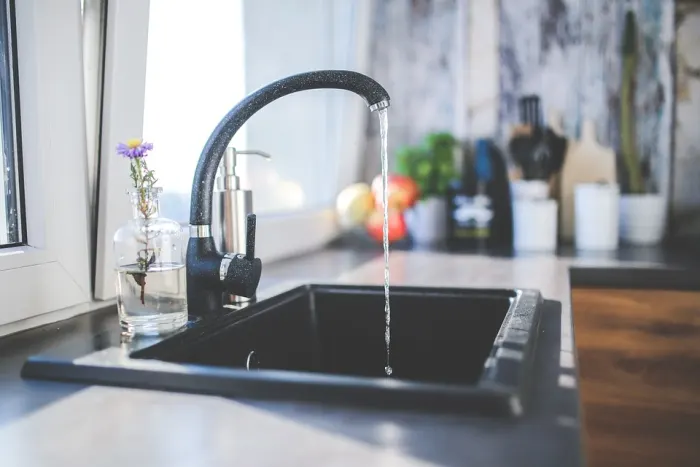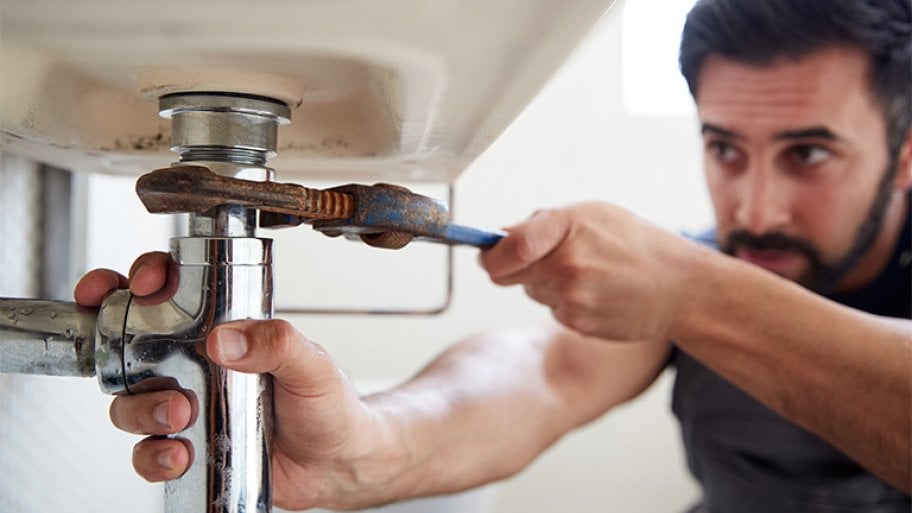We have discovered this great article relating to Diagnose Unwanted Plumbing Noises listed below on the net and decided it made perfect sense to relate it with you here.

To detect loud plumbing, it is important to establish very first whether the undesirable noises happen on the system's inlet side-in various other words, when water is turned on-or on the drain side. Noises on the inlet side have differed reasons: too much water stress, used shutoff as well as faucet parts, improperly connected pumps or other appliances, inaccurately positioned pipe fasteners, and plumbing runs containing way too many limited bends or various other limitations. Noises on the drain side usually originate from inadequate place or, just like some inlet side noise, a format consisting of tight bends.
Hissing
Hissing noise that takes place when a tap is opened somewhat typically signals excessive water stress. Consult your regional water company if you suspect this problem; it will certainly have the ability to tell you the water pressure in your location as well as can install a pressurereducing shutoff on the inbound water system pipe if necessary.
Thudding
Thudding sound, typically accompanied by shuddering pipelines, when a faucet or appliance shutoff is shut off is a condition called water hammer. The sound as well as resonance are triggered by the reverberating wave of stress in the water, which unexpectedly has no place to go. Occasionally opening a valve that releases water rapidly into an area of piping including a constraint, elbow joint, or tee installation can create the same problem.
Water hammer can typically be healed by setting up installations called air chambers or shock absorbers in the plumbing to which the issue valves or taps are connected. These tools enable the shock wave developed by the halted flow of water to dissipate airborne they consist of, which (unlike water) is compressible.
Older plumbing systems may have brief vertical areas of capped pipe behind wall surfaces on faucet competes the same objective; these can eventually loaded with water, decreasing or damaging their effectiveness. The treatment is to drain the water supply totally by turning off the main water system shutoff as well as opening up all faucets. After that open the primary supply shutoff and shut the faucets one by one, beginning with the faucet nearest the shutoff and finishing with the one farthest away.
Babbling or Screeching
Intense chattering or shrieking that takes place when a valve or tap is turned on, and that generally disappears when the installation is opened totally, signals loose or faulty inner parts. The option is to change the valve or faucet with a brand-new one.
Pumps and home appliances such as cleaning machines as well as dish washers can transfer motor sound to pipelines if they are improperly linked. Connect such things to plumbing with plastic or rubber hoses-never rigid pipe-to isolate them.
Other Inlet Side Noises
Squeaking, squealing, scratching, snapping, and also touching usually are triggered by the growth or tightening of pipelines, generally copper ones supplying hot water. The noises happen as the pipelines slide versus loose fasteners or strike close-by home framework. You can usually determine the location of the problem if the pipes are subjected; simply adhere to the audio when the pipes are making noise. Most likely you will find a loosened pipeline wall mount or a location where pipelines exist so close to floor joists or other framing pieces that they clatter against them. Connecting foam pipeline insulation around the pipelines at the point of get in touch with need to treat the trouble. Make certain straps and hangers are secure and supply ample assistance. Where feasible, pipeline bolts need to be affixed to substantial architectural components such as structure wall surfaces rather than to framing; doing so reduces the transmission of vibrations from plumbing to surfaces that can enhance and transfer them. If attaching fasteners to framing is inescapable, cover pipelines with insulation or various other durable material where they get in touch with fasteners, and sandwich the ends of brand-new bolts in between rubber washers when installing them.
Dealing with plumbing runs that deal with flow-restricting limited or many bends is a last hope that ought to be carried out only after consulting a skilled plumbing contractor. However, this circumstance is fairly common in older residences that might not have been built with interior plumbing or that have actually seen a number of remodels, especially by beginners.
Drainpipe Noise
On the drainpipe side of plumbing, the principal goals are to remove surface areas that can be struck by falling or rushing water and also to protect pipes to have inevitable sounds.
In brand-new building, bathtubs, shower stalls, commodes, as well as wallmounted sinks and containers ought to be set on or against resilient underlayments to minimize the transmission of sound via them. Water-saving bathrooms and taps are less loud than traditional models; mount them rather than older kinds even if codes in your area still permit utilizing older fixtures.
Drains that do not run vertically to the cellar or that branch into straight pipe runs sustained at floor joists or other mounting present especially troublesome sound problems. Such pipelines are large sufficient to radiate substantial vibration; they additionally carry substantial amounts of water, that makes the situation even worse. In new building, specify cast-iron dirt pipelines (the big pipelines that drain commodes) if you can afford them. Their enormity contains a lot of the sound made by water going through them. Additionally, avoid transmitting drainpipes in walls shown to bedrooms and also rooms where people collect. Walls consisting of drains should be soundproofed as was explained previously, using dual panels of sound-insulating fiber board and also wallboard. Pipelines themselves can be wrapped with special fiberglass insulation created the purpose; such pipes have a resistant vinyl skin (often containing lead). Results are not constantly acceptable.
If Your Plumbing is Making These Sounds, There’s a Problem
A Bang or Thump When You Turn Off a Faucet
If a loud bang or thump greets you each time your turn off running water, you likely have a water hammer. A water hammer occurs when the water velocity is brought to a halt, sending a shock wave through the pipe. It can be pretty jarring — even worse, damaging to your plumbing system. All that thudding could loosen connections.
Strange Toilet Noises
You’re so familiar with the sounds your toilet makes that your ears will be attuned to anything out of the ordinary. Fortunately, most unusual toilet noises can be narrowed down to just one of several problems.
Foghorn sound:
Open the toilet tank Flush the toilet When you hear the foghorn noise, lift the float to the top of the tank If you’re ambitious, you can remove the ballcock valve and disassemble it to replace the washer. Or you can more easily replace the ballcock valve entirely. This device is relatively inexpensive and available at most any hardware store.
Persistent hissing:
The hissing following a flush is the sound of the tank filling. It should stop once the tank is full. But if the hissing continues, it’s likely because water is leaking out of the tank. The rubber flap at the bottom of the tank can degrade, letting water slip through and into the bowl. That’s why the tank is refilling continuously. Fortunately, this is an easy fix:
Cut the water to the toilet by closing the shutoff valve on the water supply line. Flush the toilet to drain the tank. Disconnect the flapper Attach the new flapper Gurgling or bubbling:
Gurgling or bubbling suggests negative air pressure in the drain line, likely resulting from a clog. As air releases, it causes the water in the toilet to bubble. This could either be a minor issue or a major one, depending on the clog’s severity. Clogs can be caused by toilet paper or more stubborn obstructions such as tree roots. If you can’t work out the clog with a plunger, contact a professional plumber for assistance because a clog of this magnitude could lead to filthy and unsanitary sewage backups in your sink bathtub.

I came across that blog post about Why Do My Pipes Make Noises when surfing the search engines. Sharing is good. Helping others is fun. Thank you so much for taking the time to read it.
Schedule An Appointment